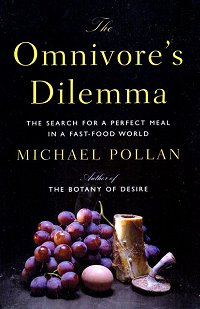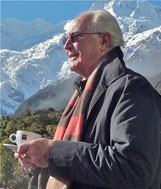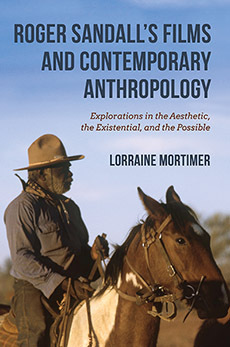Haymaking
Early in the afternoon on the first day of summer (writes Michael Pollan in The Omnivore’s Dilemma) I found myself sitting in the middle of an impossibly green pasture, resting. ‘The longest day of the year’ is what I would jot down in my notebook in bed late that night, followed by ‘literally,’ which was then struck out and replaced with ‘figuratively’. What can I say? I was tired. I’d spent the afternoon making hay, really just lending a hand to a farmer making hay, and after a few hours in the midday sun hoisting and throwing fifty-pound bales onto a hay wagon, I hurt. We think of grass as soft and hospitable stuff, but once it’s been dried in the sun and shredded by machines—once it’s hay—grass is sharp enough to draw blood and dusty enough to thicken lungs. I was covered in chaff, my forearms tattooed red with its pinpricks.
 The others—Joel Salatin, whose farm this was; his grown son, Daniel, and two helpers—had gone off to the barn for something, leaving me with a welcome moment in the pasture to gather myself before we cranked up the baler again. We were racing to get this hay in before thunderstorms predicted for the evening. It was Monday, my first of seven days working on the farm, and thus far my principal conclusion was that in the event I survived the labors of the week, I would never again begrudge a farmer any price he cared to name for his produce: one dollar for an egg seemed entirely reasonable; fifty dollars for a steak a steal.
The others—Joel Salatin, whose farm this was; his grown son, Daniel, and two helpers—had gone off to the barn for something, leaving me with a welcome moment in the pasture to gather myself before we cranked up the baler again. We were racing to get this hay in before thunderstorms predicted for the evening. It was Monday, my first of seven days working on the farm, and thus far my principal conclusion was that in the event I survived the labors of the week, I would never again begrudge a farmer any price he cared to name for his produce: one dollar for an egg seemed entirely reasonable; fifty dollars for a steak a steal.
The wail of farm machinery had fallen silent, and in the space it left I could hear the varied sounds of birds: songbirds in the trees, but also the low gossip of hens and the lower throat singing of turkeys. Up on the green, green shoulder of hill rising to the west I could see a small herd of cattle grazing, and, below them on a gentler slope, several dozen portable chicken pens marching in formation down the meadow.
The verdurous vista
Laid before me was, I realized, a scene of almost classical pastoral beauty—the meadows dotted with contented animals, the backdrop of woods, a twisting brook threading through it all—marred only by the fact that I couldn’t just lay here on this springy pasture admiring it for the rest of the afternoon. (Wasn’t leisure supposed to be a big part of the pastoral idyll?) Our culture, perhaps even our biology, disposes us to respond to just such a grassy middle landscape, suspended as it is halfway between the wilderness of forest and the artifice of civilization.
“The argument of the verdurous vista,” Henry James once called it. He had just returned from Europe to tour rural New England, and found himself beguiled by Connecticut’s pastoral charms in spite of himself and all he knew—about history, about the inevitable triumph of the machine, about “the bullying railway”. A century earlier, of course, Thomas Jefferson had made the argument of the verdurous vista with a force some of us still feel: His agrarian ideal was an attempt to make a literal American reality out of the old world’s pastoral dreams, though even he sometimes doubted the middle landscape could survive the advent of industry. But then, the pastoral idyll was already in trouble even in Virgil’s time, threatened by the encroaching marshlands on one side, the corruptions of civilization on the other.
The wonder really is that it survives at ll. Two centuries and a one-hour drive over the Blue Ridge from Monticello, Joel Salatin, a self-described “Christian-conservative-libertarian-environmentalist-lunatic farmer,” is attempting again and against all odds to put real-live grass under the old agrarian-pastoral ideal, to try to make it new long after the triumph of the industrial system Jefferson fretted over has been completed. I’d come to the Shenandoah Valley to see whether such a farm, and the alternative food chain it is part of, belonged to the past or the future.
Taking in Salatin’s verdurous vista that afternoon, it occurred to me that the only thing missing from the scene was a happy shepherd, but then, wasn’t that the tall fellow loping toward me in the broad blue suspenders and the floppy hat? Salatin’s broad-brimmed straw hat did more than protect his neck and face from the Virginia sun: It declared a political and aesthetic stance, one descended from Virgil through Jefferson with a detour through the sixties counterculture.
Whereas a feed company cap blazoned with the logo of an agribusiness giant would have said labor, would have implied (in more ways than one) debt to the industrial, Salatin’s jaunty chapeau—made of grass, note, rather than plastic—bespoke independence, sufficiency, even ease. “On our farm the animals do most of the work,” he had told me the first time we talked. At the moment, too tired to stand, the claim sounded to me like a pretty empty pastoral conceit. But as I would understand by the end of my week on Salatin’s farm, the old pastoral idea is alive and, if not well exactly, still useful, perhaps even necessary.
(The Omnivore’s Dilemma, Chapter Eight, ‘All Flesh is Grass’.)
Corn production
I feel for Michael Pollan at the end of a day’s haymaking. The sharp grass stalks prickling down your neck and the red arm-rash and the sweat and dust in the eyes and aches and pains. But some things he doesn’t know. He doesn’t know what loading hay onto a truck was like before mechanical loaders, when you had to hoist a fifty-to-sixty-pound bale from ground level up to the guy on the truck, who is three or four feet above you and reaches down to claw the bale in with a hook. And who sometimes misses.
But Part One of The Omnivore’s Dilemma is very informative. It may tell you more than you want to know—or have a stomach for—about America’s dependency on corn, and the way that big leafy plant zea mays has adapted to industrial life, “consuming prodigious quantities of fossil fuel energy and turning out ever more prodigious quantities of food energy.” Anyone interested in the relation between American obesity and American farm policies should pay attention. Runaway corn production that nobody knows how to control means the chemically fractionated corn surplus goes into a thousand different products—from chicken nuggets to Big Macs to emulsifiers and nutraceuticals. But apparently the smartest thing you can do with a bushel of corn—financially speaking—is turn it into high-fructose corn syrup. So of course that’s what happens when corn is subsidized:
Very simply, we subsidize high-fructose corn syrup in this country, but not carrots. While the surgeon general is raising alarms over the epidemic of obesity, the president is signing farm bills designed to keep the river of cheap corn flowing, guaranteeing that the cheapest calories in the supermarket will continue to be the unhealthiest.
Sure, Pollan takes occasional swipes at the evils of capitalism (of which US government farm subsidies are hardly a good example) but there’s a lot more to the book than the gripes of an old-time lefty, and you might as well put up with it. At least until something really stupid comes along, which of course it does—traditional hunter-gatherer cultures being enthusiastically invoked as socially harmonious, spiritually rich, and ecologically wise. Writing about “grass farming” and his pal in the Shenandoah Valley Joel Salatin, whose carefully managed woodland reminds the author of savanna, he tells us that
Like Salatin, hunter-gatherers deliberately promoted the welfare of the grasses in order to attract and fatten the animals they depended upon. Hunters would periodically set fire to the savanna to keep it free of trees and nourish the soil. In a sense, they too were ‘grass farmers,’ deliberately nurturing grasses so that they might harvest meat.
‘Nurturing’ hunters and gatherers
Really? Not the hunter-gatherers I knew. Deliberate they certainly were as they tossed matches into the high grass we were driving through in a Toyota Landcruiser, but ‘nourishing’ and ‘nurturing’ the ‘welfare’ of the grasses was the very last thing they had on their minds. After the monsoon, in Australia’s far north, thick swamp grass grows ten feet tall. And what does that mean? It means you can’t see in any direction. There could be kangaroos nearby—but how would you know? So you take a box of matches and burn it all.
The dry grass immediately goes up in a sheet of flame, a cloud of smoke rises 35 thousand feet over Arnhem Land, so high that jets at that altitude are sometimes forced to detour round it—a smoke cloud easily visible from outer space. The infernos lit by our native “grass farmers” pollute the atmosphere downwind for hundreds of miles, and at the end of their “nurturing” endeavors the land is most assuredly cleared.
You can now see two or three hundred yards no trouble. In a week or so there’ll be bright green grass coming up, and with the grass will come kangaroos to eat it, and all will be well. But the growth of the grass is just a by-product of land-clearance, and the arrival of the ‘roos is a by-product of that—the notion of “nurturing nature” is just a pastoral fantasy in the head of an imaginative Californian writer. Indeed, so careless were some of these men (so blind to nature and lacking in foresight even when their lives were at stake) they nonchalantly tossed matches into the grass behind the 4WD even in a following wind.
But Michael Pollan’s okay just the same. Read about the feedlots for cattle, with beeves standing day after day ankle deep in excrement and pumped full of antibiotics to deal with E-coli; read about chicken farming with the chickens pumped full of antibiotics too; read in thoughtful detail about the consequences of a food system organized strictly on industrial lines that prizes consistency, mechanization, predictability, interchangeability, and economics of scale above all else; and read about the real cost to human and animal health of the above:
The ninety-nine-cent price of a fast-food hamburger simply doesn’t take account of that meal’s true cost—to soil, oil, public health, the public purse, etc., costs which are never charged directly to the consumer but, indirectly and invisibly, to the taxpayer (in the form of subsidies), the health care system (in the form of food-borne illnesses and obesity), and the environment (in the form of pollution), not to mention the welfare of the workers in the feedlot and the slaughterhouse and the welfare of the animals themselves.

 An Australian writer living in Sydney, Roger Sandall is the author of The Culture Cult (2001), a study of romantic primitivism and its effects. His work has appeared in a number of places including Commentary, The American Interest, Encounter, The New Criterion, The American, Sight and Sound, Quadrant, Art International, The New Lugano Review, The Salisbury Review, Merkur, Mankind, Visual Anthropology, and Social Science and Modern Society.
An Australian writer living in Sydney, Roger Sandall is the author of The Culture Cult (2001), a study of romantic primitivism and its effects. His work has appeared in a number of places including Commentary, The American Interest, Encounter, The New Criterion, The American, Sight and Sound, Quadrant, Art International, The New Lugano Review, The Salisbury Review, Merkur, Mankind, Visual Anthropology, and Social Science and Modern Society.